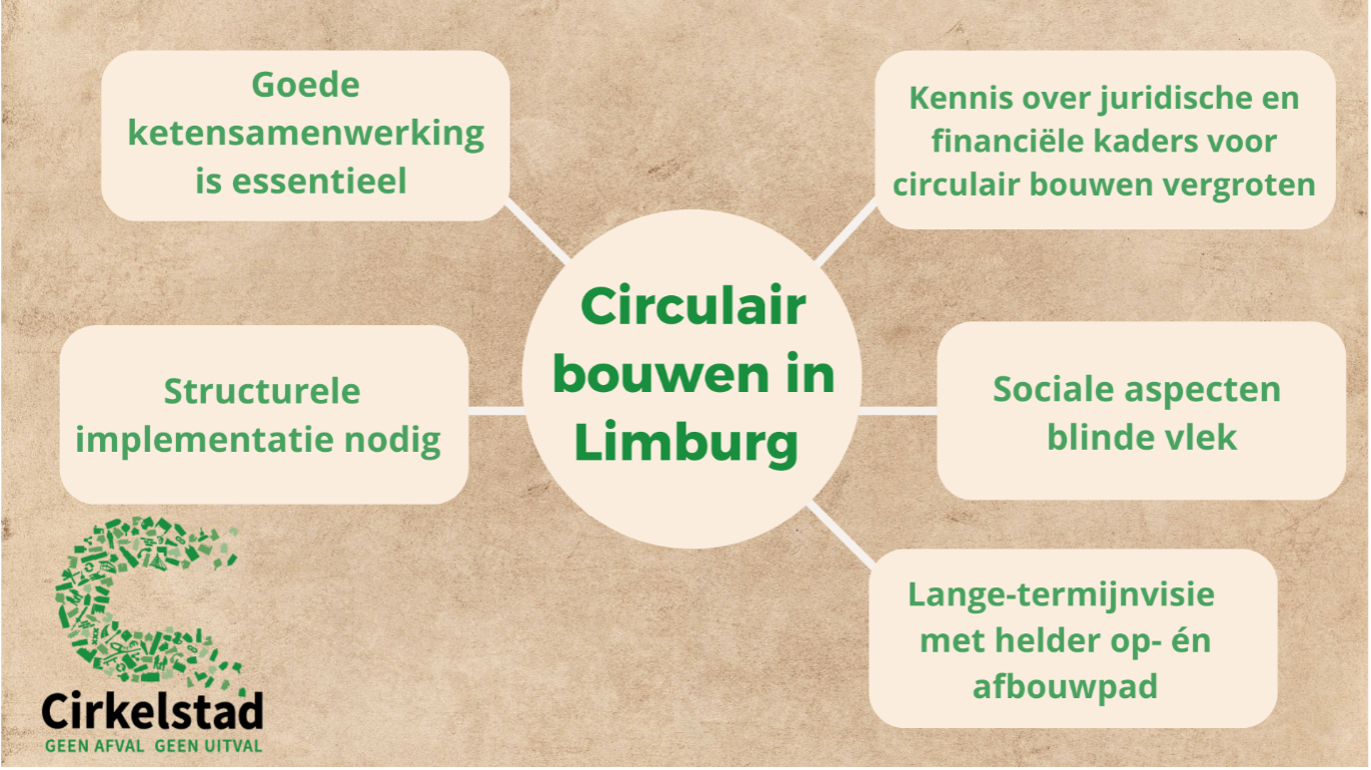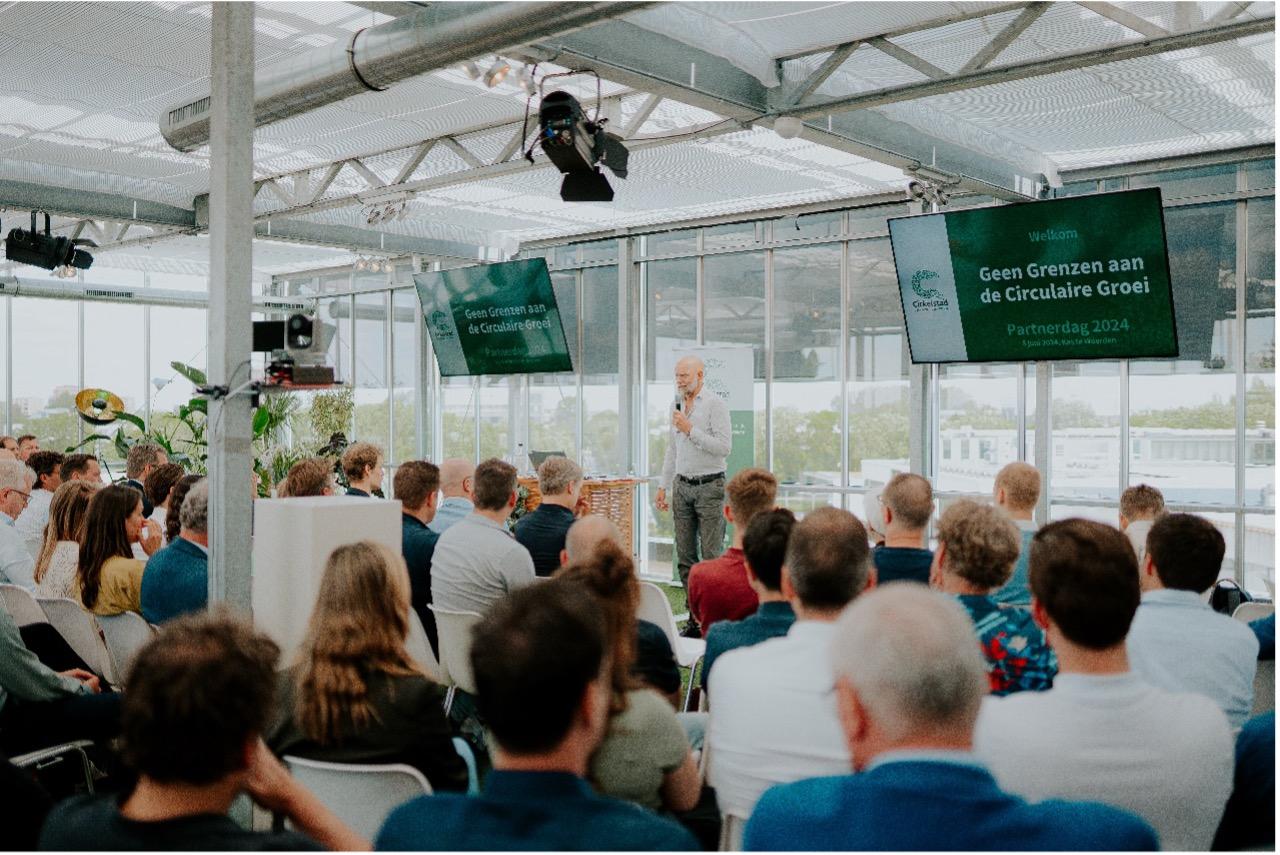By Cirkelstad Limburg
We answer that question with the Monitor Circular Construction in Limburg: a unique survey of 34 chain parties that maps the state of affairs, bottlenecks and opportunities.
The construction task in Limburg is large, while the urgency of our environmental issue is growing. To reconcile both challenges, we need to start working with circular construction. To accelerate the transition to a fully circular construction sector, Cirkelstad Limburg shares the results of the Circular Construction Monitor in Limburg.
Collaborative partners
The monitor is an initiative of the Brabant Approach to Circular Construction, but focuses specifically on Limburg, in collaboration with Circulair Bouwend, EN Zuid, and Cirkelstad Limburg. In the monitor, 34 chain parties participated: from municipalities and housing corporations to construction companies, suppliers and consulting firms.
The Monitor Circular Construction in Limburg enables us to provide targeted knowledge, networking opportunities and solutions regarding the current challenges facing entrepreneurs, including during our partner meeting on June 19 (see below). The results have been compiled into the following 5 striking trends that set the stage for further development of circular construction in Limburg.

Trend 1: Little legal and financial space for circular building
Interest in circular building continues to grow, but is hampered by lack of knowledge of laws and regulations in the supply chain, from municipalities to construction companies and from housing associations to suppliers, causing many circular initiatives to founder or slow down.
There are more legal and financial opportunities than assumed to get started with circular initiatives. Consider booking depreciation costs for circular products and reviewing outdated procurement rules that do not allow for circular solutions. Lack of legal and financial assurance for circular performance in contracts is another major bottleneck. The monitor shows that at 67% of participants, assurance is hardly part of business operations.
Trend 2: Long-term vision vs. short-term choices
More than half of participants (54%) acknowledge that a lack of long-term vision is one of the biggest obstacles in the transition to circular building. Without a strategic framework, organizations lack the overview to integrate sustainable choices into decision-making. This often leads to short-term solutions that may seem cheaper, but ultimately undermine more sustainable projects. Moreover, hardly anyone is still concerned with formulating a "phase-out path": the phase-out of linear processes and materials. Mainly housing corporations, suppliers and municipalities still pay limited attention to this.
Trend 3: For the transition to circular construction, good chain cooperation is essential
.A successful circular construction project hinges on chain collaboration, but suppliers and construction companies still perceive this as one of the biggest challenges. Municipalities and housing associations score lowest in collaboration initiatives, resulting in insufficient sharing of knowledge, resources and expertise. Due to the emphasis on short-term results and self-interest, strategic, long-term collaboration remains underdeveloped, hindering the scale-up of circular processes. There is a clear overlap here with trend 2.

Trend 4: Social aspects still too often a blind spot in circular construction projects
.The New Normal (HNN), the national framework for circular construction, encompasses technical, environmental and social aspects of the construction process. Unfortunately, the social aspects in many circular construction projects do not yet receive the attention they deserve. In particular, housing corporations hardly put any effort into this while they are often close to the resident.
Construction companies lead the way in this aspect because of their good dealings with residents and employees with a distance to the labor market. Using reintegration workers in construction projects is a valuable development that offers both social impact and benefits for those involved. Yet it is not yet widely utilized. By putting more focus on employing people with a distance to the labor market, circular construction projects can not only become more sustainable, but also contribute to a more inclusive workplace.
Trend 5: Circular construction without structural implementation, then ambitions remain non-committal
Circular performance is rarely firmly anchored in contracts, leading to non-committal agreements and missed opportunities for structural change. Legal and financial safeguards in particular are lacking among participants, with the exception of consulting firms. Municipalities, corporations and suppliers lag behind in this respect. Here lies an opportunity to catch up by recording circular goals more often in black and white. This creates more clarity and long-term commitment throughout the chain.
Meeting on June 19
On June 19 will take place a partner meeting in Weert about circularity for clients.
There we will explore together what role housing corporations and governments play to advance circularity in the construction sector. During the event we will have interesting guest speakers, including director of Cirkelstad Bert Krikke and senior project leader of Trudo Marcel van Dooremalen. We invite a broad group of Limburg clients to join this conversation.
If interested, please contact the spinners of Cirkelstad Limburg Bas van de Westerlo and Dennis de Hoog at limburg@cirkelstad.nl.